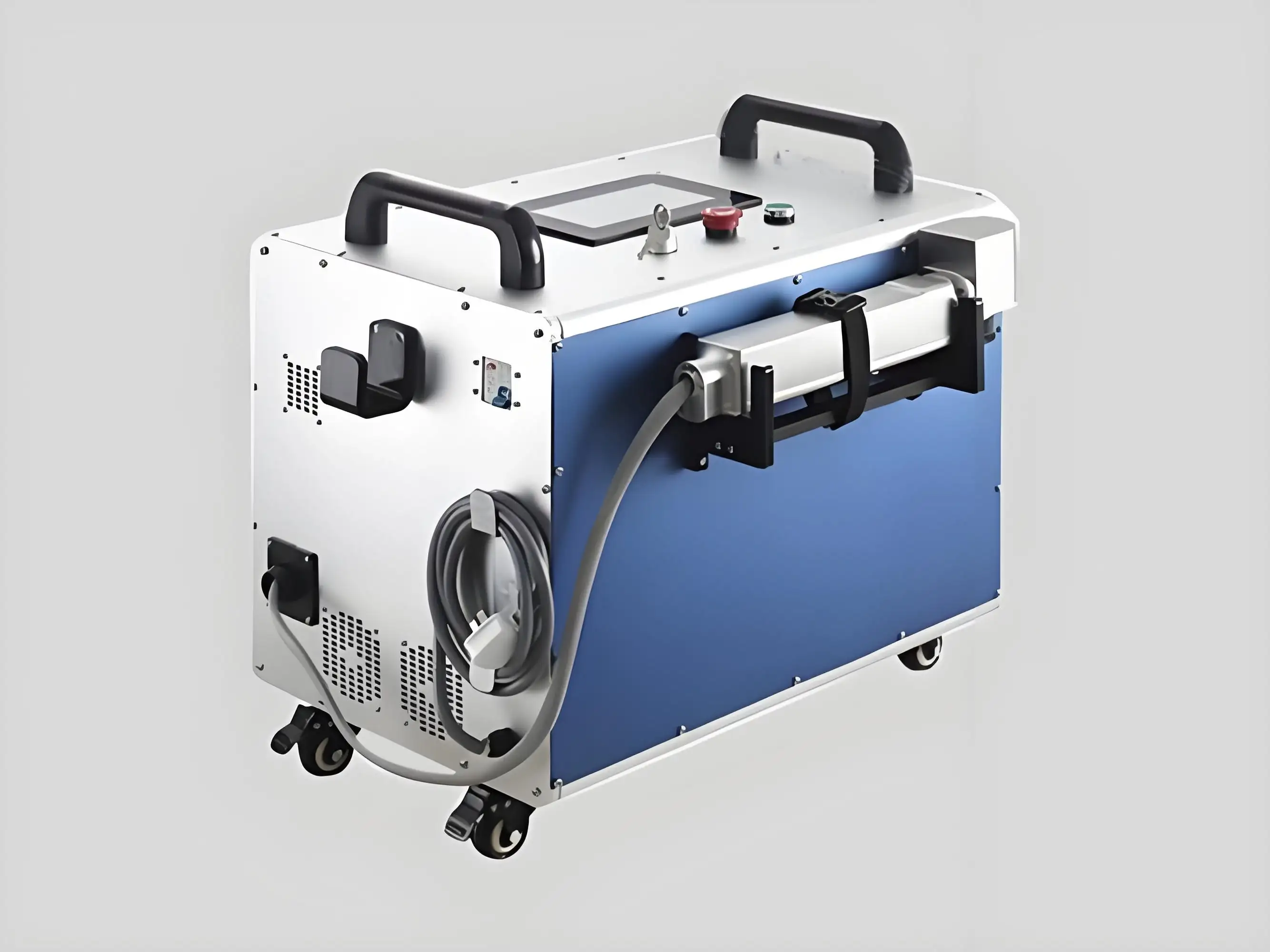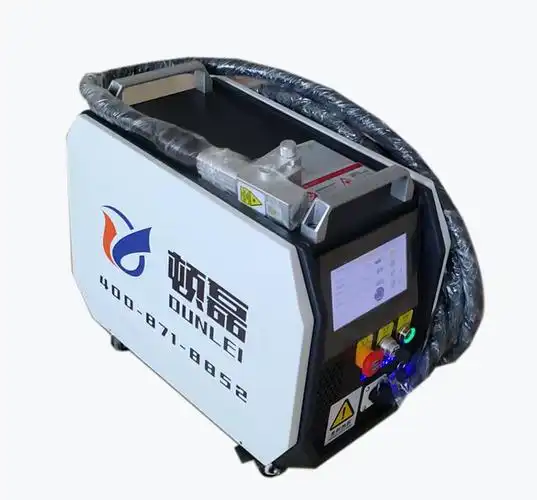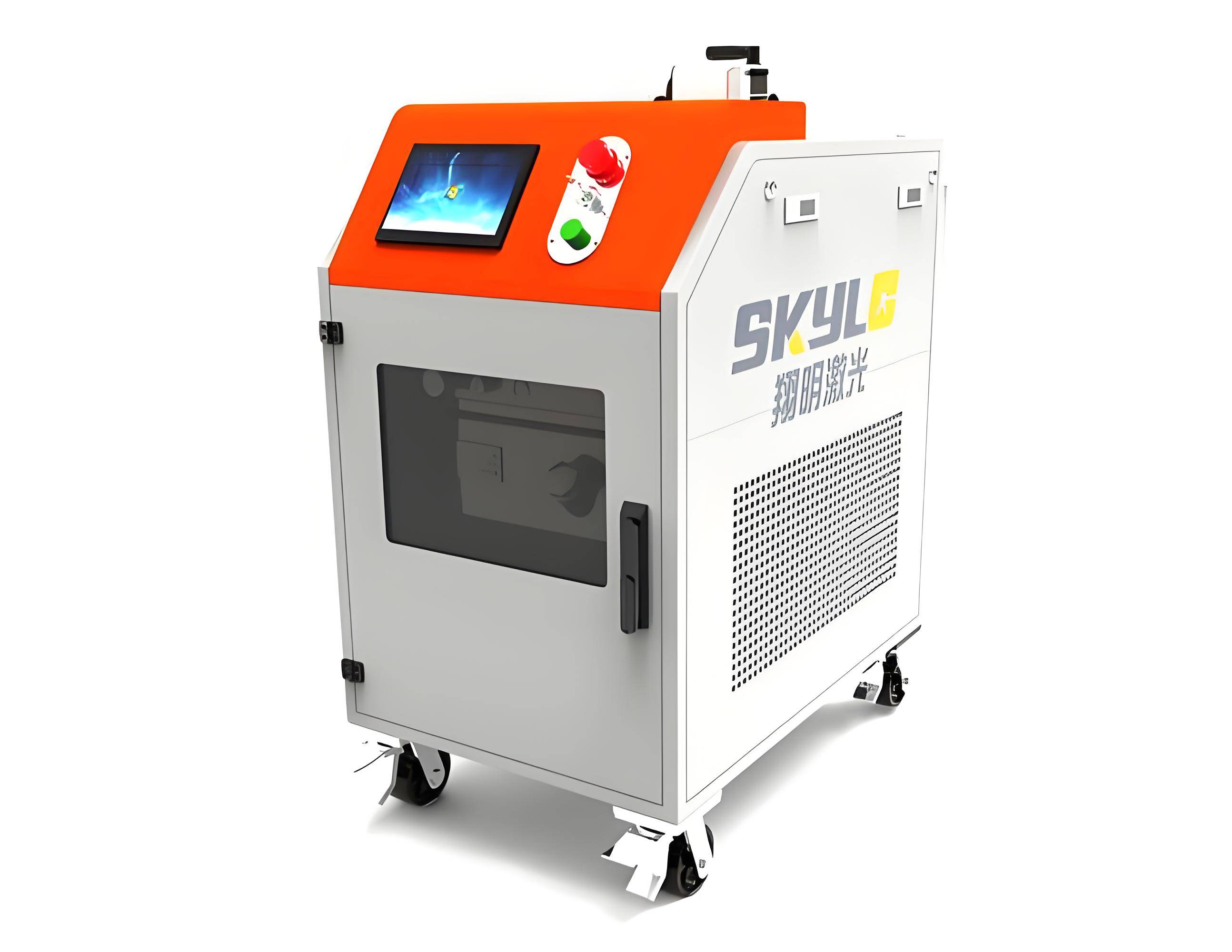In the world of surface treatment and maintenance, laser rust removal has carved out a niche for itself as a highly efficient, precise, and environmentally friendly method. As someone who has been deeply entrenched in the laser technology and industrial cleaning sector for years, I’ve witnessed firsthand the evolution of laser rust removal machines and the diverse laser types they employ. Today, I’m here to delve into the nuances of these laser types, explaining their differences, applications, and advantages.

Understanding Laser Rust Removal Basics
Before diving into the specifics of laser types, let’s quickly recap what laser rust removal entails. Laser rust removal, or laser cleaning, utilizes high-energy laser beams to vaporize or ablate rust, paint, coatings, and other contaminants from surfaces without causing damage to the underlying material. This non-contact process ensures precision and minimizes the risk of mechanical wear and tear.
Key Benefits of Laser Rust Removal:
Precision: Laser beams can be focused to very small spots, enabling detailed cleaning of intricate parts.
Efficiency: Often faster than traditional methods like sandblasting or chemical stripping.
Environmental Friendliness: No chemicals or abrasives are used, reducing waste and environmental impact.
Non-Destructive: Preserves the integrity of the underlying material, making it ideal for sensitive applications.
Laser Types in Laser Rust Removal Machines
Now, let’s explore the main laser types used in laser rust removal machines and their distinguishing features.
Fiber Lasers
Fiber lasers have gained immense popularity in recent years due to their high efficiency, compact size, and excellent beam quality. They operate by pumping light into a fiber optic cable doped with rare-earth elements, which then amplifies the light to produce a laser beam.
Advantages:
High Efficiency: Fiber lasers convert electrical energy into laser light with high efficiency, reducing energy consumption and operating costs.
Compact Design: Their small footprint makes them ideal for applications where space is limited.
Excellent Beam Quality: Produces a high-quality, focused beam, enabling precise cleaning.
Long Lifespan: Fiber lasers have a long operational lifespan, requiring minimal maintenance.
Applications:
Fiber lasers are widely used in automotive, aerospace, and electronics industries for rust removal, paint stripping, and surface preparation.
CO2 Lasers
CO2 lasers are among the oldest and most established laser types. They operate by exciting a mixture of carbon dioxide, nitrogen, and helium gases to produce a laser beam.

Advantages:
High Power Output: CO2 lasers can generate high power levels, making them suitable for heavy-duty cleaning tasks.
Versatility: Can be used on a wide range of materials, including metals, plastics, and composites.
Good Absorption: The wavelength of CO2 lasers is well-absorbed by many materials, enhancing cleaning efficiency.
Applications:
CO2 lasers are commonly used in industrial cleaning, welding, and cutting applications. They are particularly effective for removing thick layers of rust and paint.
Nd:YAG Lasers
Nd:YAG (Neodymium-doped Yttrium Aluminum Garnet) lasers are solid-state lasers that use a crystal as the gain medium. They are known for their high peak power and short pulse durations.
Advantages:
High Peak Power: Enables efficient removal of stubborn contaminants.
Short Pulse Durations: Minimizes heat input to the substrate, reducing the risk of thermal damage.
Good for Precision Work: Ideal for applications requiring high precision and minimal material removal.
Applications:
Nd:YAG lasers are used in precision cleaning, marking, and engraving applications. They are particularly effective for cleaning delicate parts and surfaces.
Pulsed Fiber Lasers
Pulsed fiber lasers combine the advantages of fiber lasers with pulsed operation. They emit laser pulses at high repetition rates, allowing for precise control over the cleaning process.
Advantages:
Precise Control: The ability to adjust pulse duration, frequency, and energy enables precise cleaning of various materials.
Reduced Heat Input: Pulsed operation minimizes heat input to the substrate, reducing the risk of thermal distortion or damage.
High Flexibility: Can be adapted to a wide range of cleaning tasks by adjusting pulse parameters.

Applications:
Pulsed fiber lasers are used in a variety of industries, including automotive, aerospace, and medical device manufacturing. They are particularly effective for cleaning sensitive parts and surfaces with high precision.
Comparative Analysis of Laser Types
To help you better understand the differences between these laser types, here’s a comparative analysis table:
| Laser Type | Power Output | Beam Quality | Applications | Advantages |
|---|---|---|---|---|
| Fiber Laser | High | Excellent | Automotive, Aerospace, Electronics | High efficiency, compact design, long lifespan |
| CO2 Laser | Very High | Good | Industrial Cleaning, Welding, Cutting | High power output, versatility, good absorption |
| Nd:YAG Laser | High Peak Power | Good | Precision Cleaning, Marking, Engraving | High peak power, short pulse durations, good for precision work |
| Pulsed Fiber Laser | Adjustable (High to Low) | Excellent | Automotive, Aerospace, Medical Device Manufacturing | Precise control, reduced heat input, high flexibility |
Key Takeaways from the Table:
Fiber lasers excel in applications requiring high efficiency and compact design.
CO2 lasers are ideal for heavy-duty cleaning tasks due to their high power output.
Nd:YAG lasers are suitable for precision work with high peak power and short pulse durations.
Pulsed fiber lasers offer the highest flexibility, allowing for precise control over the cleaning process.
Choosing the Right Laser Type for Your Application
Selecting the right laser type for your laser rust removal machine depends on several factors, including:
Material Type: Different materials absorb laser light differently. Consider the wavelength and power requirements of your specific material.
Cleaning Requirements: Determine the level of precision, speed, and depth of cleaning required. Some laser types are better suited for heavy-duty cleaning, while others excel in precision applications.
Budget: Laser types vary in cost, both in terms of initial investment and ongoing maintenance. Consider your budget constraints when making a decision.
Environmental Considerations: Some laser types may produce more waste or require additional safety measures. Evaluate the environmental impact of your chosen laser type.
Future Scalability: If you anticipate growth or changes in your cleaning requirements, consider a laser type that offers scalability and flexibility.

Real-World Examples and Case Studies
To illustrate the practical applications of these laser types, let’s look at a few real-world examples and case studies.
Case Study 1: Automotive Industry
A leading automotive manufacturer was looking for a way to efficiently remove rust and paint from car parts before assembly. They opted for a fiber laser rust removal machine due to its high efficiency, compact design, and excellent beam quality. The machine enabled them to achieve precise cleaning results, improving the quality of their finished products and reducing production costs.
Case Study 2: Aerospace Industry
An aerospace company needed to clean delicate aircraft components without causing damage. They chose a pulsed fiber laser due to its precise control over pulse parameters and reduced heat input. The laser enabled them to remove contaminants without affecting the integrity of the components, ensuring the safety and reliability of their aircraft.
Case Study 3: Industrial Cleaning
A large industrial facility was struggling with heavy rust buildup on steel beams and other structural components. They decided to rent a CO2 laser rust removal machine due to its high power output and versatility. The machine allowed them to quickly and efficiently remove the rust, extending the lifespan of their equipment and reducing maintenance costs.
Maintenance and Safety Considerations
Regardless of the laser type you choose, proper maintenance and safety measures are essential to ensure optimal performance and operator safety.
Maintenance Tips:
Regular Cleaning: Keep the laser optics and cooling system clean to prevent contamination and overheating.
Inspection: Regularly inspect the laser system for signs of wear or damage. Replace worn parts promptly to avoid breakdowns.
Calibration: Periodically calibrate the laser system to ensure accurate beam delivery and power output.
Safety Measures:
Protective Gear: Operators should wear appropriate protective gear, including safety glasses, gloves, and clothing.
Training: Ensure that all operators receive proper training on laser safety and operation procedures.
Ventilation: Provide adequate ventilation to remove fumes and particles generated during the cleaning process.
Emergency Procedures: Establish and communicate emergency procedures in case of accidents or malfunctions.

Future Trends in Laser Rust Removal Technology
As technology continues to advance, we can expect to see several exciting developments in laser rust removal technology.
Increased Automation: Automated laser rust removal systems are becoming more prevalent, offering improved efficiency, consistency, and safety.
Enhanced Precision: Advances in laser optics and control systems are enabling even higher levels of precision in laser rust removal.
Portable Solutions: Portable laser rust removal machines are gaining popularity, allowing for on-site cleaning in remote or hard-to-reach locations.
Green Technology: Research is underway to develop more environmentally friendly laser rust removal technologies, reducing waste and energy consumption.
Conclusion: Selecting the Right Laser Type for Your Needs
In conclusion, choosing the right laser type for your laser rust removal machine is crucial to achieving optimal results. By considering factors such as material type, cleaning requirements, budget, environmental considerations, and future scalability, you can make an informed decision that meets your specific needs.
Whether you opt for a fiber laser, CO2 laser, Nd:YAG laser, or pulsed fiber laser, each type offers unique advantages and applications. By understanding the differences between these laser types and staying informed about the latest developments in laser rust removal technology, you can ensure that your cleaning processes are efficient, precise, and environmentally friendly.

Related Questions and Answers
Q1: Which laser type is best for removing thick layers of rust?
A1: For removing thick layers of rust, a CO2 laser is often the best choice due to its high power output and ability to generate significant heat for effective rust removal.
Q2: Can laser rust removal be used on delicate or sensitive materials?
A2: Yes, laser rust removal can be used on delicate or sensitive materials by selecting the appropriate laser type and adjusting pulse parameters. Pulsed fiber lasers and Nd:YAG lasers are particularly suitable for such applications due to their precise control and reduced heat input.
Q3: What are the safety considerations when using laser rust removal machines?
A3: Safety considerations when using laser rust removal machines include wearing appropriate protective gear, receiving proper training on laser safety and operation procedures, providing adequate ventilation, and establishing emergency procedures.
Q4: How much does a laser rust removal machine cost?
A4: The cost of a laser rust removal machine varies widely depending on the laser type, power output, features, and brand. Prices can range from a few thousand dollars for entry-level models to several hundred thousand dollars for high-end, industrial-grade systems.
Q5: Can laser rust removal be automated?
A5: Yes, laser rust removal can be automated using robotic systems and advanced control software. Automated laser rust removal offers improved efficiency, consistency, and safety, making it an attractive option for large-scale industrial applications.






